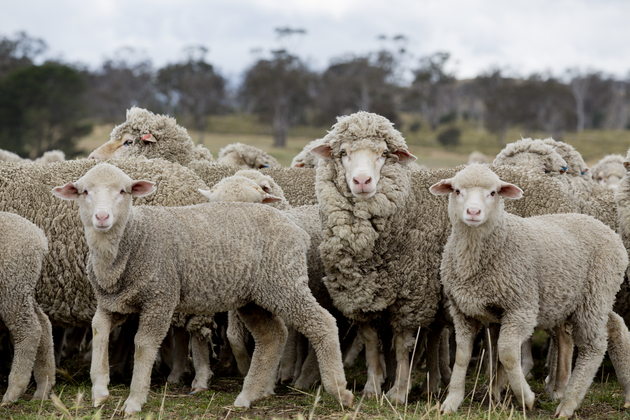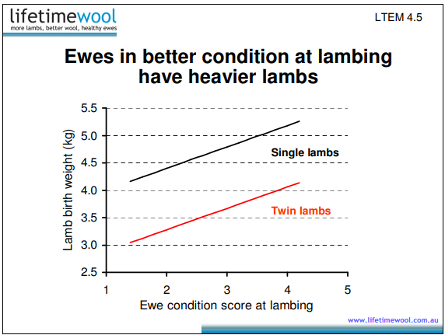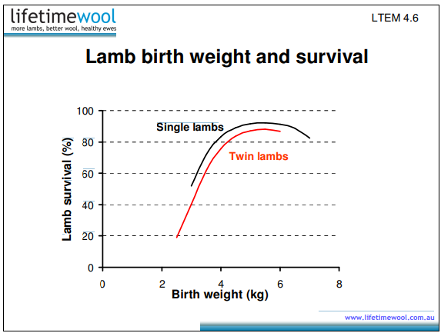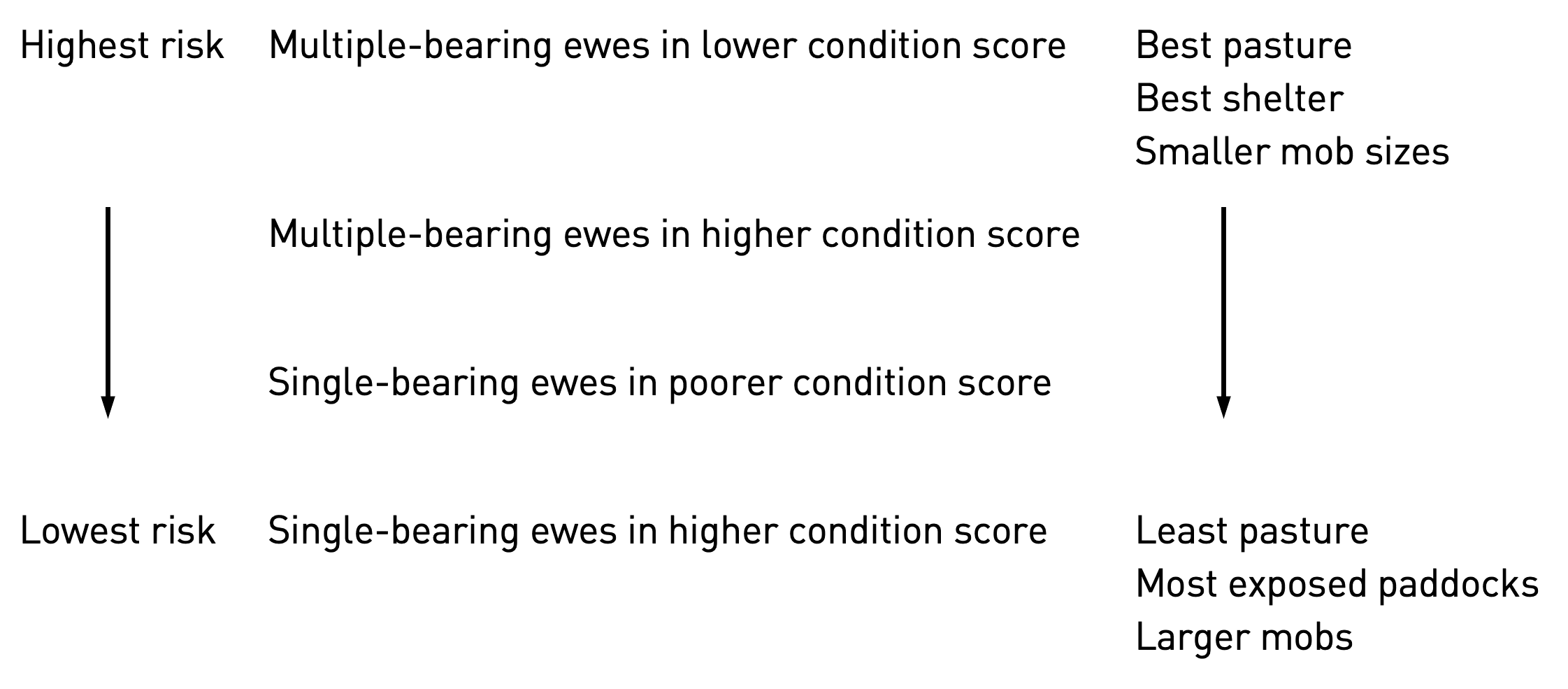Raising the bar with lamb survival

Lambing is fast approaching for most of you, with lambing already underway for some. This presents an opportunity to raise the bar on your marking results.
What’s your target lamb survival and overall marking rate for 2024? How are you going to achieve these goals? Improving lamb survival can be challenging due to the impacts of several interrelated factors. Here we outline some of the key management strategies that can be implemented to improve lamb survival.
Ewe nutrition and lamb birthweight
Most lambs die within the first two days of life, with birthweight being the greatest determinant of lamb survival. Birthweight is heavily influenced by ewe nutrition during late pregnancy. Ewe nutrition is also critical for the ewe’s own survival and productivity.
Single-, twin- and triplet-bearing ewes have vastly different nutritional requirements. The energy requirements of twin-bearing ewes are about 15% higher than that of single-bearing ewes during late pregnancy and 25% higher during peak lactation. These requirements are best met by pregnancy scanning for multiples and differentially managing single- and multiple-bearing ewes after pregnancy scanning.
Lamb survival is maximised when lambs are born at weights between 4.5 and 5.5 kg, but lambing environment and whether they are a single or twin affect the response. Birthweight of single and twin lambs can decrease by 0.4 to 0.5 kg when ewes lose a condition score during pregnancy. Birthweights are most sensitive to changes in ewe condition in late pregnancy when most foetal growth occurs.


Single-bearing ewes should be in condition score 2.8 to 3.0, and twin-bearing ewes should be in condition score 3.0 to 3.3 by lambing to optimise lamb survival, especially in an environment susceptible to poor lambing conditions.
Ensure that you assess ewe condition score at pregnancy scanning so that you can manage nutrition to achieve the condition score targets. Assessing condition score before lambing enables ewes in poorer condition to be allocated to better lambing paddocks and receive more targeted supplementary feeding. Condition scoring has advantages over monitoring liveweight during pregnancy and dry periods due to the developing foetus and variations in gut fill.
Optimising ewe nutrition in late pregnancy is also important for the lifetime performance of her progeny. For example, lambs born to ewes that gain more condition in late pregnancy will cut more wool at a finer micron throughout their life.
If you are needing to brush up on condition scoring, you can find resources here:
- Condition scoring yard book (LifetimeWool)
- Lifetime Ewe Management app (AWI)
- This app is free and available at the App store and the Google Play store.
Allocation of ewes to lambing paddocks
Pasture
Feed-on-offer (FOO) in lambing paddocks should be at least 1000 kg DM/ha for single-bearing ewes and 1500 kg DM/ha for twin-bearing ewes to provide adequate nutrition. Having sufficient FOO also encourages the ewe to stay at the birth site after lambing. Remaining at the birth site is important for the development of the ewe-lamb bond, especially for multiple-bearing ewes and their lambs.
The LifetimeWool Ewe Management Handbooks provide guidelines for FOO and ewe condition score at key stages of the reproductive cycle for different production zones. They can be found here:
For more on feed budgeting, refer to our article ‘Feed budgeting 101’ in our current newsletter (Autumn 2024).
Mob size
This is close to heart for our staff member, Amy Lockwood, who completed her PhD on the effects of mob size and stocking rate at lambing on the survival of single- and twin-born lambs. In a nutshell, smaller mobs of ewes at lambing result in better lamb survival. The impact is greater for twins than singles, with survival of twin-born lambs increasing by 2.2% (or marking rate increasing by 4.5%) when the mob size of twin-bearing ewes at lambing is reduced by 100 ewes. Recent research also showed that the impact is even greater for triplet-bearing ewes, where survival increased by 1.5% when the mob size of triplet-bearing ewes was decreased by 10 ewes, so the equivalent of over 6 times the effect in twins. It should be noted that this work included mostly non-Merino ewes and hence further validation is required for Merinos.
You should therefore prioritise smaller mobs for twin- and triplet-bearing ewes over single-bearing ewes. There are no generic recommendations for optimum mob size at lambing because the economic optimum mob size is dependent on several enterprise-specific factors. As a general rule of thumb, optimum mob size for twin-bearing ewes is about 50% smaller than that of single-bearing ewes, and optimum mob size for triplet-bearing ewes is about 30% that of twin-bearing ewes.
Smaller mob sizes can be achieved through adjusting the allocation of ewes within existing paddocks or by subdividing paddocks. Temporary electric fencing can be a good option for subdividing paddocks for lambing and the cost of the temporary fencing is typically paid off within a year. Permanent subdivision of paddocks has the added benefit of improving pasture utilisation and increases profitability over the long-term, but we appreciate that many of you run mixed enterprises where larger paddocks are more efficient for cropping.
Shelter
Shelter is particularly important for multiple-bearing ewes and lambs, and in environments which experience a higher chill index during lambing i.e. cold, wet and windy conditions. Paddocks with effective shelter throughout the paddock that provide protection from the prevailing winds are considered the best paddocks for lambing.
Historical records
Utilising lambing results from past years is valuable when selecting lambing paddocks. Paddocks which repeatedly achieve good lamb survival should be allocated to higher risk ewes and lambs i.e. multiples and ewes in poorer condition.
Privacy and protection from predators
Minimising disturbances during lambing are important to minimise disruption of the lambing process and to encourage development of the ewe-lamb bond. This is particularly important for multiple-bearing ewes, which are more likely to be separated from one or more of their lambs. Disturbances may be from dogs, vehicles or people. Smaller mob sizes at lambing prevent disturbances because fewer lambs are born per day and therefore there is less risk of interference from other lambing ewes or recently lambed ewes and their lambs.
An effective predator control program should be implemented before lambing if predators are an issue in your region. FeralScan™ is a platform for monitoring and recording pest animal activity and management. It is available as an interactive website and mobile phone app, and can be used by woolgrowers to assist with implementing best-practice pest control. Find out more here:
Summary
- Assess ewe condition score at pregnancy scanning and monitor during late pregnancy to ensure you are on track to meet the targets for lambing
- Assess FOO in lambing paddocks and prioritise paddocks with more and higher quality (more legume) feed for multiple-bearing ewes
- Prioritise smaller mob sizes at lambing for multiple-bearing ewes
- Allocate your best lambing paddocks to your highest risk ewes. Also consider ewe age if lambing in age groups, as maiden and the oldest ewes are also at greater risk.

For more information check out the following short videos:
- AWI Change Makers series - Episode 1: Lambing mob size
- AWI Change Makers series - Episode 4: Ewe condition scoring
- AWI Change Makers series - Episode 6: Lambing paddock planning
Amy Lockwood, AWI Extension WA





